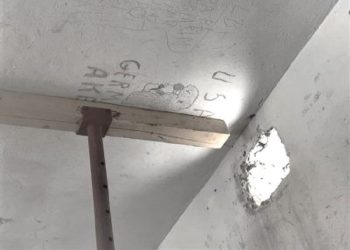Dashnor Kaloçi
Memorie.al publishes the unknown history of the construction of the largest hydropower projects erected in Albania before the 1990s, which were designed, financed and built with the help of the Yugoslavs, the Soviets and the Chinese. The whole story, from the “Lenin” hydropower plant of Selita that ended in 1951, “Karl Marx” and “Frederik Engels” of Ulza and Shkopet on the river Mat, “Josif Visarianovich Stalin” on the river Bistrica, “Mao Ce Dun” of Vau i Dejës, “Drita e Partisë ‘of Fierza, to” Enver Hoxha “of Koman on the cascade of the river Drin, which ended in 1985, as well as the scientific opinion of Albanian specialists such as: Egon Gjadri, Petrit Radovicka, Bardhyl Reso , Llazar Papajorgji, Alfred Paloka, Engjëll Cuçi, etc., for these works that once met the needs of the country and exported 25% of their production …!
The large amount of rainfall last week which brought major floods in some areas of the country, mainly in the north-west, such as: Shkodra, Lezha, Kurbini, Kruja, Durres, etc., as well as in some districts others, such as: Elbasan, Lushnja, Fieri and Vlora, naturally brought to the attention of the relevant state authorities the cascades of lakes formed by the construction of hydropower dams, which were erected in our country during the communist regime before the ’90s -of, from south to north.
After the ’90s, as a result of the change in the way of life of Albanian families and also the market economy, the need to supply the population and businesses with electricity, marked a galloping increase compared to that before the’ 90s, which in different periods of time, when our country has been affected by prolonged droughts and lack of rainfall, there have been deep energy crises, which have been resolved through energy imports.
The energy crises that our country has gone through not infrequently in these three decades of the post-communist period and that have often become the subject of constant quarrels for the Albanian political class, are closely related to the management of hydropower works that were built in Albania years ago ‘ 90s, their installed power and with the distribution system of the energy network that supplies our country, which since they were built five decades ago, and as a result of the old technology, are being depreciated more and more more. Although after the ’90s, tens or hundreds of small local hydropower plants have been built and the “hunger” for them continues to be great from various private entities, our country continues to be’ fed ‘with electricity by hydropower plants built in the period of socialism, which, it must be said, are among the few works that still function from that economic-political system, even with maximum capacities!
What are the hydro-energy works that were erected in Albania before the ’90s, where are they distributed, by whom were they designed and built, what is their installed capacity and average annual electricity production, and which is the scientific opinion of the best Albanian energy specialists for those works which once had 25% of their production for export, and currently continue to be the main source of supply for the country’s economy! For all these, Memorie.al is giving a short history of them, based mainly on facts, data and studies that were published before the ’90s in the magazine “Scientific Scientific Bulletin”, by Albanian specialists on good in this field.
Lanabregas hydropower plant “Lenin” with Selita water
Excluding the construction of the Vithkuq hydropower plant in the Korça district that was erected in 1933 by the regime of the Zog Monarchy, which had a modest power generation capacity, the history of building the first hydropower plants in Albania begins with that of Lanabregas , or as it is otherwise known: Selita Hydropower Plant of Selita, located on the eastern outskirts of the city of Tirana. The first barracks for the beginning of the construction works of that hydro-energy work which was designed by Yugoslav specialists and engineers, to give light only to the city of Tirana, started there in the spring of 1947, and its works were completed on dated November 8, 1952, at which time it was put into operation. The construction and commissioning of that work was made possible by the help and loans of the Yugoslav government granted to the Albanian state, which at that time had just emerged from the war and was extremely poor and backward. To set in motion the turbines of that hydropower plant, the natural sources of water flowing from the underground of Selita and Shënmëria were used, from where, at that time and for many years after, the city of Tirana was supplied with drinking water. The water obtained from those springs, after passing through six tunnels (built at that time), enters through two parallel pipes, which fall sharply on the turbines of the Lanabregas Hydropower Plant, from a height of 630 meters.
According to Albanian hydropower specialists (published in the statistics of the mid-1980s), that hydropower plant has an installed capacity of 5 thousand people. with two aggregates and with an annual electricity production of up to about 40 million kwh. Unlike other hydropower plants that were later built in our country, that of Selita, has buried underground the building of the power plant and its substation. Around 1963, the water inflows in that hydropower plant increased, which made possible the increase of electricity production in that work, whose water ends up in the Tirana Water Supply and still supplies the inhabitants of the capital even today. in their faucets.
Karl Marks Hydropower Plant of Ulza on the river Mat
Immediately after the construction and commissioning of the Selita Hydropower Plant, in 1952, the construction of another hydropower plant began on the Mati River, near Lake Ulza. Like the Selita hydropower plant, for the one being built on the Mat River, the first projects were made by Yugoslav specialists, but with the breakdown of official relations between the two countries, they were halved. The Ulza hydropower plant continued and was built with the help of Soviet specialists and engineers, being put into operation in 1957. In that hydropower project a concrete dam with a height of 60 meters and a width of 260 meters was built, in its highest part.
There is also the work of water intake together with the plant building and that of surface discharge for the effect of large inflows, which consists of four spaces. Unlike other hydro-energy works built later in our country, a characteristic of the Ulza Hydropower Plant is that: the machinery room is located inside the body of the dam, which has a volume of 260 thousand cubic meters of concrete. From the construction of that dam on the Mat River, a reservoir (lake) has been obtained, with a total volume of 240 million cubic meters of water. At its completion, that hydropower plant had a installed capacity of 25.6 thousand kW, with four units and an average annual production of electricity, which went up to about 120 million kwh.
Frederik Engels Hydropower Plant on the Mat River in Shkopet
The third hydropower plant built in our country, and the second on the Mat River, is that of Shkopet, which before the ’90s was otherwise known as “Frederik Engels”. The first works of that hydro-energy work erected on the Shkopet Gorge, began in 1959 with the help of Soviet specialists and engineers, who after the breakdown of official relations between the two countries at the end of 1961, left leaving that half.
Its construction continued with Albanian specialists and engineers who made possible its completion and put into operation in 1963. For the construction of that hydropower plant was erected a 47.7-meter-high dam, which is built in the shape of an arch, where and are located: surface discharge of large inflows, water conduction system together with the receiving act of the conduct tunnel, balancing tower, power plant building and electrical substation. That hydro-energy project at its completion marked a set power of 24 thousand kw., With two aggregates and an average annual electricity production of about 90 million kwh. The dam of that hydropower plant creates a large reservoir (lake) with a volume of 14 million cubic meters of water, which, among other things, has been used for years by the inhabitants of the surrounding villages and beyond.
Bistrica “Josif Visaraniovic Stalin” Hydropower Plant
The fourth hydropower plant built in our country, is the one on the river Bistrica, which before the ’90s, was otherwise known as “Joseph Stalin”. That hydropower project began to be built in 1960, with the help of Soviet specialists and engineers, but with the breakdown of relations between the two countries, they left it halfway and its construction became possible thanks to Albanian specialists and engineers, who completed it by putting it into operation in 1965. In that hydro-energy work, were built: a dam with a special substance which is 17 meters high, the discharge of large inflows tower type, the system of conducting water intake near the dam, reinforced concrete water supply pipeline, 3.8 km long supply tunnel, balancing tower and three turbine pipelines, as well as the power plant building and electrical substation.
At the completion of the works and the commissioning of that hydropower plant, its installed capacity was 22.5 thousand kW, with three units and an annual production of about 110 million kWh. With the completion of this work, which greatly increased the production of electricity in our country, immediately began the construction of another hydropower plant on the same river, which was called “Bistrica 2”. This hydropower plant operates through water that it receives from an open canal flowing from the other hydropower plant, (that no.1). Hydropower plants no. 2, which was put into operation in 1966, marked a set power of 5 thousand kW with an aggregate and an average annual electricity production of 34 million kwh.
Vau i Dejes Hydropower Plant “Mao Ce Dun” on the Drin
After the completion of the construction and commissioning of the two hydropower plants on the river Bistrica, seeing that the country’s needs for electricity were growing more and more, (this more with the construction of some new industrial works), the Albanian government Prime Minister Mehmet Shehu, decided to build another hydropower plant, which was planned to be built on the Drin River, in a place called Vau i Dejës, a few km. north-east of the city of Shkodra. The first barracks for the construction of that hydropower plant, (for which initial studies had been done since 1915 by an Italian engineer), were laid there in 1967, while its completion and commissioning became possible only in 1971…
The completion of that hydropower project, which became a reality thanks to the assistance and loans provided by the Chinese government, was considered a major event, as with the power installed there, the production of electricity suffered almost a doubling of the capacity of his. For the construction of that hydropower plant, a dam was erected over the village of Zadeja and one in Qyrsaq, where in the latter, the tunnel of the Drin River diversion was built, which was adapted for large inflows during its use. In Qyrsq, in the concrete dam which is 60 meters high, are placed the discharge of a part of the large river inflows, as well as the water intake work.
Following it was built a stone dam and deltine core, 46.4 meters high, which closes the neck of Qyrsq, turbine pipelines with the power plant building and electrical substation. The construction of these two dams has made possible the creation of a reservoir (Lake Vau i Dejës), which has a volume of approximately 580 million cubic meters of water. At the end of that work, that hydropower plant had a installed capacity of 250 thousand kW, with five units and an average annual electricity production of about 1.1 billion kwh.
Hydropower plant “Drita e Partisë” of Fierza on the Drin
After the completion and commissioning of the hydropower plant “Mao Ce Dun” of Vau i Dejes, the Albanian government of that time after the decision of the Political Bureau of the Central Committee of the ALP, decided to build another hydropower project on the river Drin, which would have an installed capacity, almost as much as all other hydropower plants built up to that time, taken together. The main purpose of building that giant hydropower plant (whose dam was considered the largest in Europe), was to supply electricity to the Elbasan Metallurgical Plant, which was the largest consumer of energy throughout the country. The first beginnings of work on the construction of this hydropower plant, which would be built on the river Drin (in a place called Fierzë), have their origins in November 1971 and that was announced by the then Prime Minister Mehmet Shehu, during a working visit he had to the city of Shkodra, where he “gave the great news of the Party”.
For the construction of the Fierza hydropower plant, which like most of the other hydropower works built up to that time in our country, became possible thanks to the economic and financial assistance and loans provided by the Chinese government for Albania, a dam with stone and gravel and a deltine core was erected, which is 166 meters high. Near that dam are built: intake system water supply system and four turbine tunnels, power plant building and substation, two large discharge tunnels, as well as two river diversion tunnels used during construction his. With its completion and commissioning in 1978, that hydropower plant had a capacity of 500,000 kW, with four units, with an average annual output of about 1.8 billion kWh.
From the construction of the dam of that hydropower plant, an artificial lake with a volume of 2.7 billion cubic meters of water has been formed. Like the hydropower plant “Mao Ce Dun” of Vau i Dejës, that of Fierza was set up with equipment and machinery from the People’s Republic of China, with which the Albanian government had contracted years ago when relations between them were very close and friendly. Thousands of workers, technicians, specialists and engineers, not only from the provinces, worked on the construction of that great hydropower plant, which until then bore the brunt of the electricity supply throughout the country. of Northern Albania, such as Shkodra, Tropoja, Kukësi, Puka, Mati, Mirdita, Laçi, etc., but also from other districts, up to the South of Albania.
Hydropower plant “Enver Hoxha” of Koman on the Drin
The third and last hydropower plant that was built on the Drin River, but also the last in Albania, is the Koman hydropower plant (located in a place called Melgun Gorge), on the Drin River, which before the ’90s, was known otherwise with the name Hydropower Plant “Enver Hoxha”. The beginning of the works of that hydro-energy work, which is the biggest not only on the cascade of the river Drin, but also in our whole country, has its origins in 1979, and its completion and putting into use became possible only in 1985. Like the Fierza hydropower plant, the purpose of building the Koman hydropower plant was to supply electricity to a large part of the various industrial works erected over the years in some districts of the country, which also benefited the part with the largest production of these two hydropower works.
For the construction of the Fierza hydropower plant, the following have been erected: large stone dam and reinforced concrete screen, water intake system with intake work, two flow tunnels, two balance towers and four turbine tunnels, the building of power plant with power substation, two large discharge discharge tunnels during operation and two river diversion tunnels during construction. The construction of the dam made it possible to create a reservoir (artificial lake), which occupies an area of about 12 km. square and a water volume of 450 million cubic meters.
Unlike other hydropower projects built up to that time in Albania, mainly those on the Drin River, which were built with the help and loans provided by the Chinese government, the Koman hydropower plant was built with the technical assistance of specialists and engineers. various that the Albanian government contracted from several European countries, mainly the French, who also dealt with the installation of giant turbines. With the completion and commissioning of that work, that hydropower plant marked a installed capacity of 600 thousand kw, with four units and an average annual electricity production of 2 billion kwh. Most of the annual electricity production obtained from the Koman hydropower plant was used for the domestic needs of the country (in industrial works and household consumption), and 25% of it went for export. In the construction of these giant works of the Albanian hydropower (Vau i Dejës, Koman and Fierzë), in addition to the work and sweat of thousands and thousands of workers (where dozens of them lost their lives from various accidents at work), worked and managed competently high professional and some well-known names before and after the ’90s, such as Emin Musliu, Besnik Bekteshi, etc.
Construction of two TPPs and dozens of local hydropower plants
In addition to the construction of hydropower plants in Selita, Bistrica, (1 and 2) Ulza, Shkopet, Vau i Dejes, Fierza and Koman, Albania’s hydropower network was supplied by two large TPPs (Thermal Power Plants), built in Korça and in Fier. Also, in addition to these large works that were the main basis of electricity production in the country, during the communist regime before the ’90s, in almost all of Albania were built several dozen small local hydropower plants, which were mainly used to power the villages and other inhabited areas where they were set up. Most of these small hydropower plants, or rather the former hydropower plants, (because over the years they have been completely depreciated and after the 90s, very few of them are able to produce energy), were built in the districts of Korça, Librazhd, Tepelena, Elbasan, Tirana, etc., which are crossed by the rivers of Devoll, Vjosa, Shkumbin, Erzeni, with the sources of which they feed.
The ‘golden’ time when Albania met the needs of the country and exported 25% of its energy production …!
Given the great growth and development of hydropower works that were erected in Albania until 1985, when the Koman hydropower plant was completed, it was necessary to publish a special magazine that would address only the topic of energy. This became possible only in 1986 with the beginning of the publication of the magazine “Scientific Bulletin of Energy”, a magazine in which they published their writings and studies, most of the specialists or researchers in this field, such as: Egon Gjadri, Petrit Radovicka, Bardhyl Reso, Llazar Papajorgji, Alfred Paloka, Engjëll Cuçi, etc. Although in these various studies and articles published in those years in the journal “Scientific Bulletin of Energy”, a large place was occupied by ideological propaganda, (which was a tribute to be paid at any cost), the rest of them studies that are mainly dedicated to the construction of energy works in Albania and its distribution network, have been evaluated as valuable contributions not only for that time, but also for today. This is due to the fact that those works that are still in operation, producing electricity and after the 90s such works were not built, as in those years and after, were also used to export electricity to neighboring countries… This is also confirmed in a study by the well-known expert (of socialist economics), Lazar Papajorgji, (published in the journal “Energy Scientific Bulletin in 1986), where among other things he states:” Strengthening the austerity regime and the use with the efficiency of energy resources, are a permanent task for our economy, which not only meets its ever-increasing needs, but also exports surpluses. Over the last 30 years over 25% of the primary energy produced in the country has been exported. Only the export of electricity in 1986 was 2.2 times higher than the production of energy in 1966. The value of electricity, for example, is not measured only by the costs incurred for its production, but by the amount of industrial production realized from its use in the production process which receive 10 – 12 ALL for each kilowatt hour. The total amount of primary energy in our country has doubled on average every 7.7 years, while that of electricity, approximately every 6 years. Our country today (it is about 1986, our note), ranks among the few countries with active energy balance, which not only meets the growing demands of the economy, but exports about 20 – 25% of the primary energy produced. Only electricity in a good hydrological year of this five-year, was exported almost twice as much as what was produced in 1970, while in the five years taken together in the 8th five-year period (1896-1990), it is expected to be exported about 3 times more than was exported in the 6th five years. Electricity production has increased significantly, now in one year it is produced five times more than it was produced in 1970, or 220 times more than in 1950, while the installed power of energy facilities, compared to the year 1970, has been added more than 6.5 times. In 1986, the works on the Koman hydropower plant were completed, whose production capacity is equal to double the production of all energy facilities in 1970. The 400-kW line was completed and put into operation for the first time. from Elbasan on the border with Greece, which created the opportunity not only to significantly increase the ability to export energy, but also to connect our energy system in parallel with that of other European countries, through the system of Greece. Another 220 hp line was also built and put into operation. for the export of energy towards Kosovo”. Memorie.al




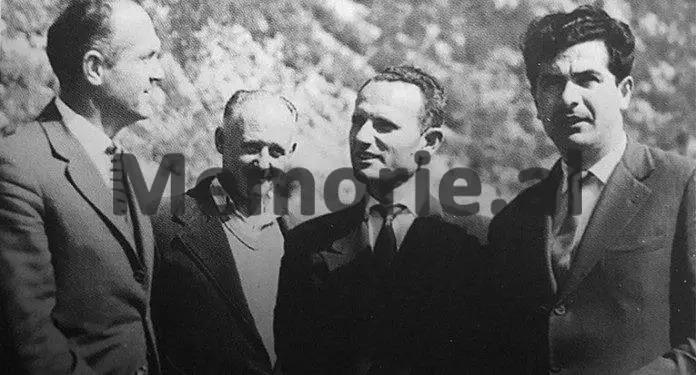

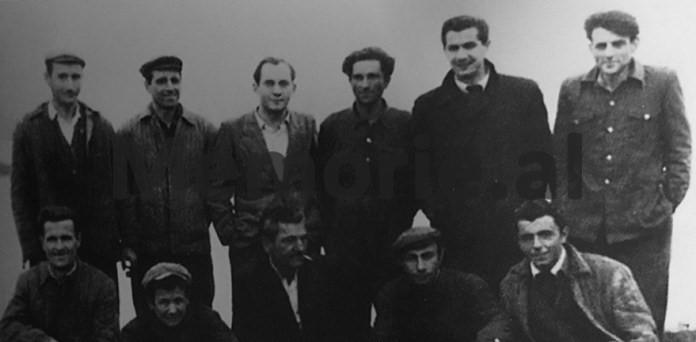

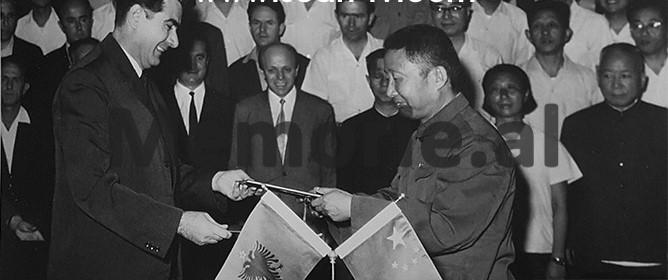

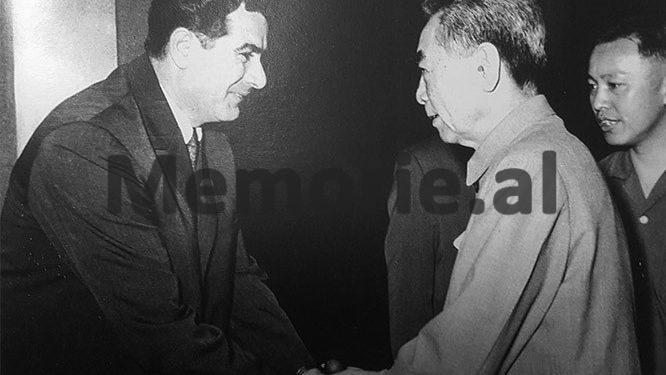
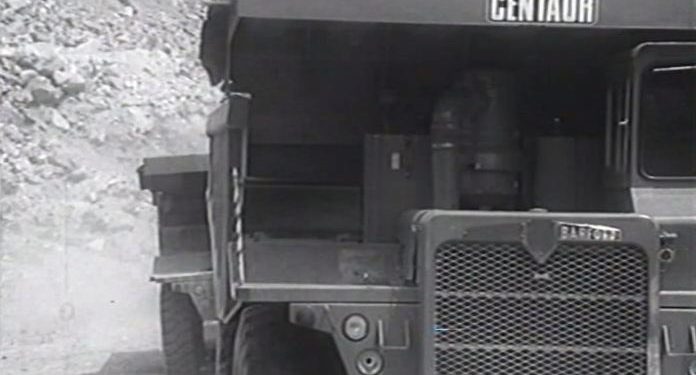
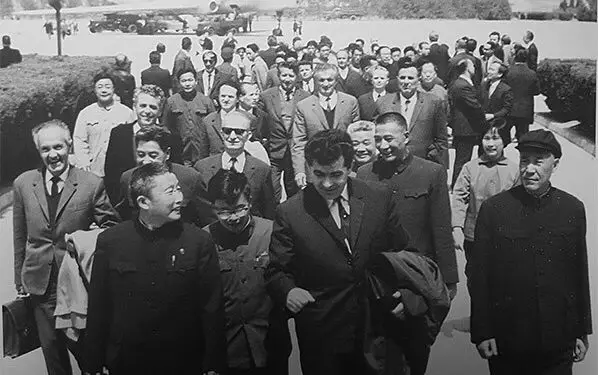
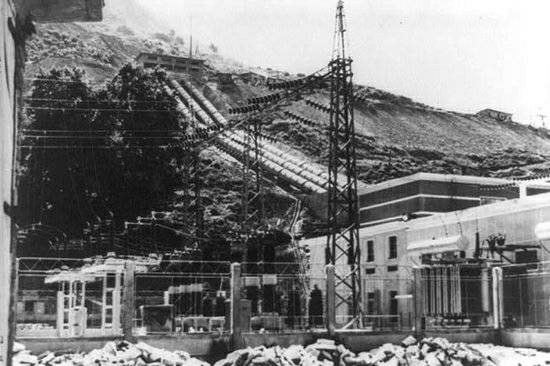
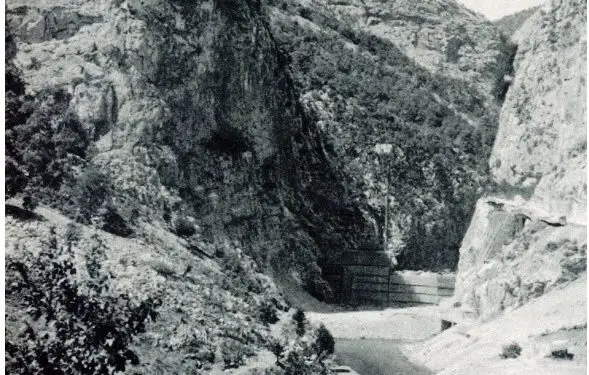
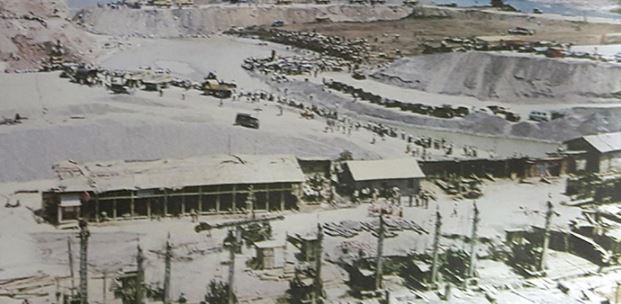
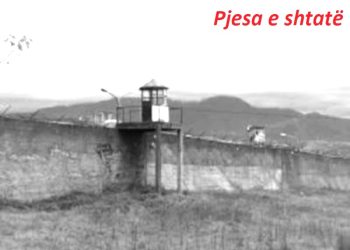
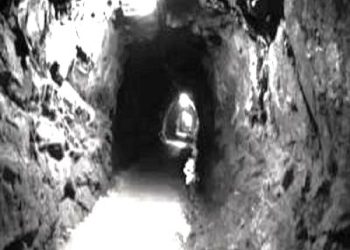
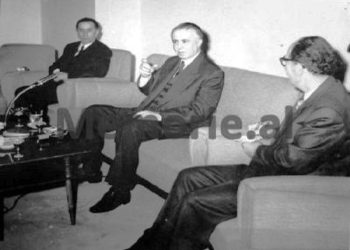
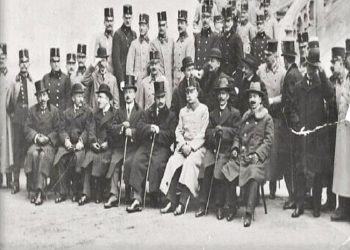
![“After Bardhi’s arrest, it was said that; in 1967, when Enver Hoxha would take part in the inauguration of the Rrogozhinë – Fier railway, he would blow up [the train]…” / The unknown story of the “terrorist” from Kavaja](https://memorie.al/wp-content/uploads/2024/05/admin-ajax-16-350x250.jpg)
